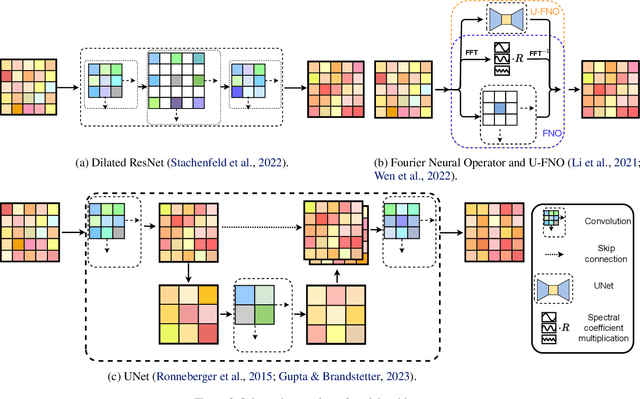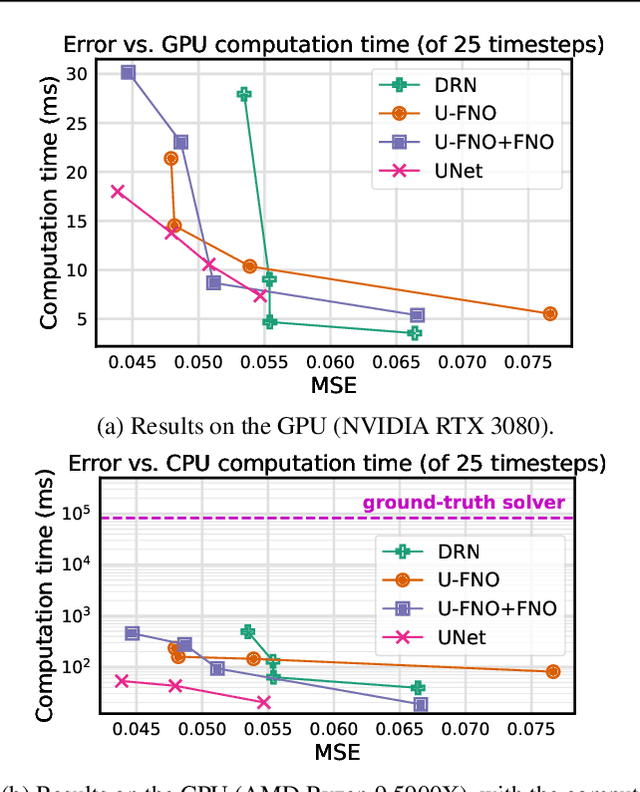Harshit Bansal
Accelerating Simulation of Two-Phase Flows with Neural PDE Surrogates
May 27, 2024



Abstract:Simulation is a powerful tool to better understand physical systems, but generally requires computationally expensive numerical methods. Downstream applications of such simulations can become computationally infeasible if they require many forward solves, for example in the case of inverse design with many degrees of freedom. In this work, we investigate and extend neural PDE solvers as a tool to aid in scaling simulations for two-phase flow problems, and simulations of oil expulsion from a pore specifically. We extend existing numerical methods for this problem to a more complex setting involving varying geometries of the domain to generate a challenging dataset. Further, we investigate three prominent neural PDE solver methods, namely the UNet, DRN and U-FNO, and extend them for characteristics of the oil-expulsion problem: (1) spatial conditioning on the geometry; (2) periodicity in the boundary; (3) approximate mass conservation. We scale all methods and benchmark their speed-accuracy trade-off, evaluate qualitative properties, and perform an ablation study. We find that the investigated methods can accurately model the droplet dynamics with up to three orders of magnitude speed-up, that our extensions improve performance over the baselines, and that the introduced varying geometries constitute a significantly more challenging setting over the previously considered oil expulsion problem.
SciSports: Learning football kinematics through two-dimensional tracking data
Aug 14, 2018



Abstract:SciSports is a Dutch startup company specializing in football analytics. This paper describes a joint research effort with SciSports, during the Study Group Mathematics with Industry 2018 at Eindhoven, the Netherlands. The main challenge that we addressed was to automatically process empirical football players' trajectories, in order to extract useful information from them. The data provided to us was two-dimensional positional data during entire matches. We developed methods based on Newtonian mechanics and the Kalman filter, Generative Adversarial Nets and Variational Autoencoders. In addition, we trained a discriminator network to recognize and discern different movement patterns of players. The Kalman-filter approach yields an interpretable model, in which a small number of player-dependent parameters can be fit; in theory this could be used to distinguish among players. The Generative-Adversarial-Nets approach appears promising in theory, and some initial tests showed an improvement with respect to the baseline, but the limits in time and computational power meant that we could not fully explore it. We also trained a Discriminator network to distinguish between two players based on their trajectories; after training, the network managed to distinguish between some pairs of players, but not between others. After training, the Variational Autoencoders generated trajectories that are difficult to distinguish, visually, from the data. These experiments provide an indication that deep generative models can learn the underlying structure and statistics of football players' trajectories. This can serve as a starting point for determining player qualities based on such trajectory data.
 Add to Chrome
Add to Chrome Add to Firefox
Add to Firefox Add to Edge
Add to Edge